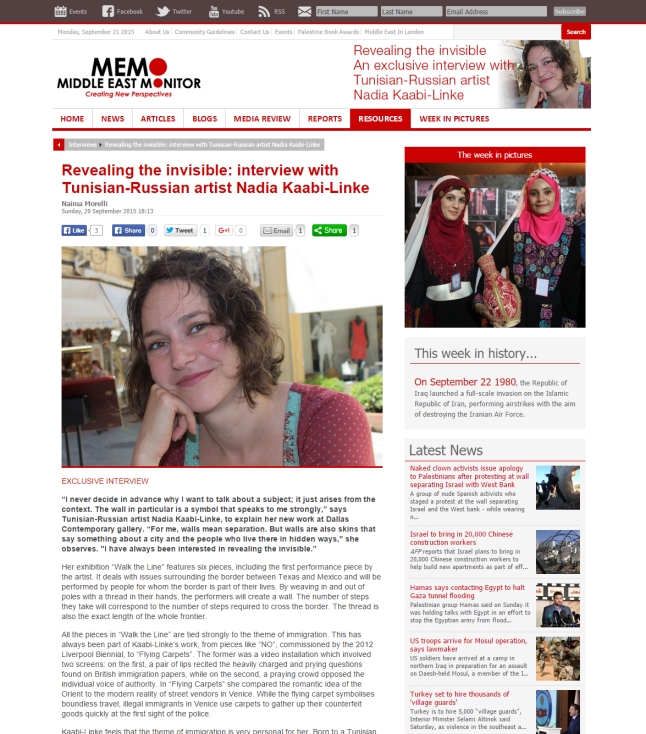
“I never decide in advance why I want to talk about a subject; it just arises from the context. The wall in particular is a symbol that speaks to me strongly,” says Tunisian-Russian artist Nadia Kaabi-Linke, to explain her new work at Dallas Contemporary gallery. “For me, walls mean separation. But walls are also skins that say something about a city and the people who live there in hidden ways,” she observes. “I have always been interested in revealing the invisible.”
Nadia Kaabi-Linke was born in Tunis in 1978 to a Russian mother and Tunisian father, she studied at the University of Fine Arts in Tunis before receiving a PhD from La Sorbonne in Paris. Her installations, objects and pictorial works are embedded in urban contexts, intertwined with memory and geographically and politically constructed identities. She currently has a solo show, called “Walk the Line”, at Dallas Contemporary in Texas, USA, from September 20 until December 21. I have interviewed Nadia for Middle East Monitor , asking her about her personal path through art, the Tunisian contemporary art scene and the theme of migration in her work.
Read More



